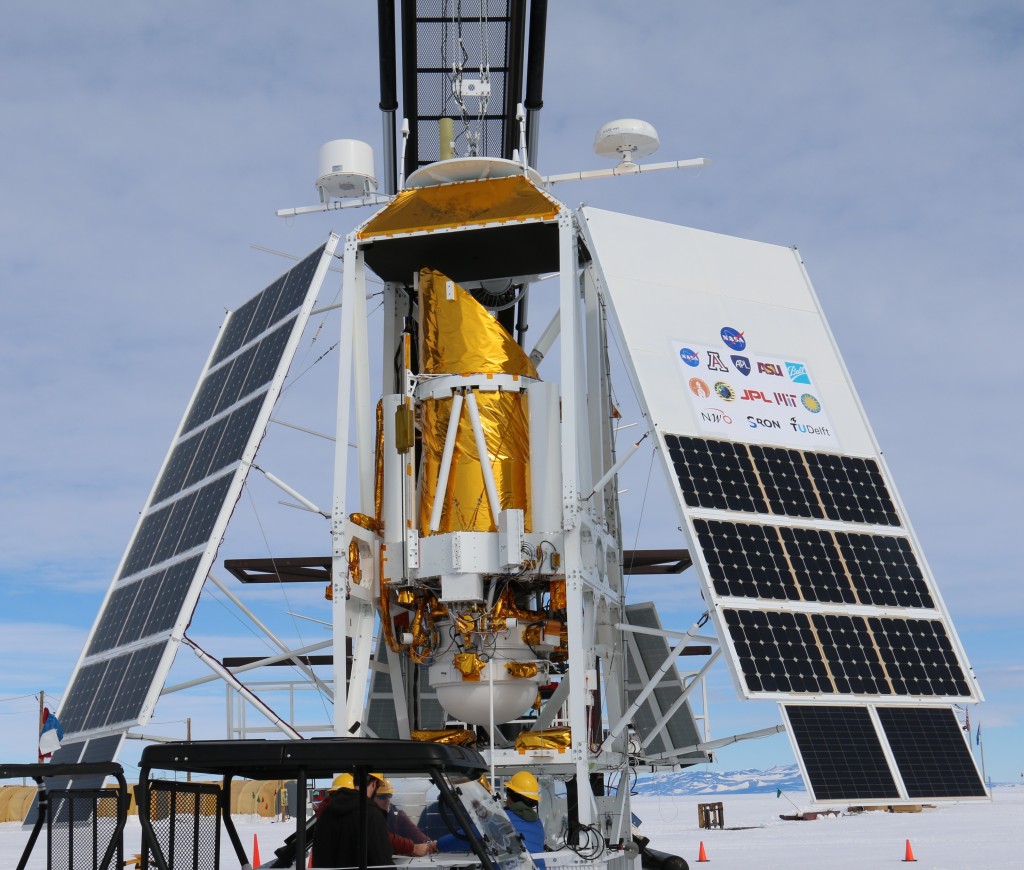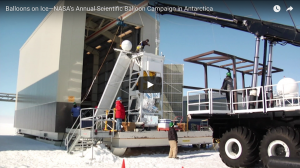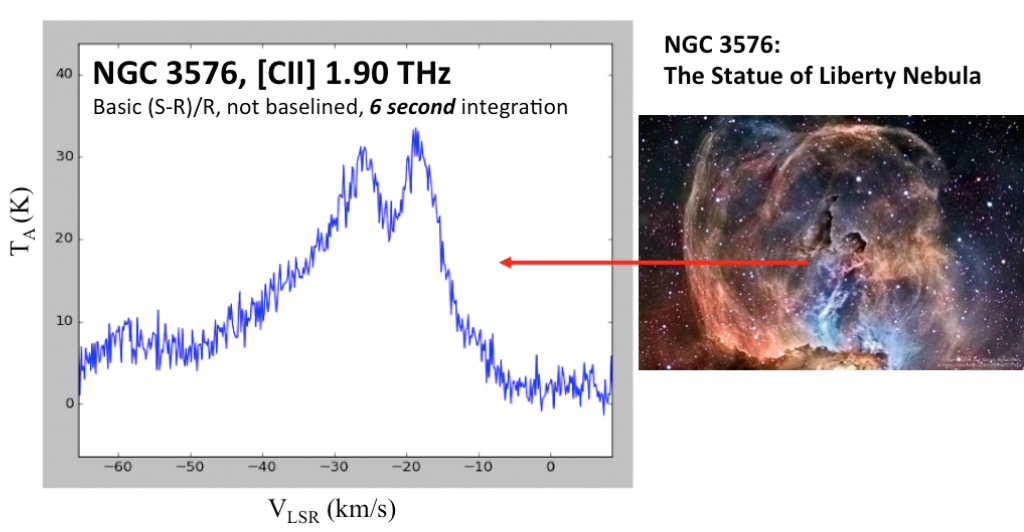STO2
New video for STO1,2 and GUSTO
Stratospheric Terahertz Observatory (STO-2) is a NASA-funded long duration balloon experiment designed to address a key problem in modern astrophysics: understanding the life cycle of star-forming molecular clouds in our Milky Way Galaxy.

STO2 in Antarctica
At an altitude of 40 kilometers above Antarctica, the sky is crystal clear. There is scarcely any water vapor which can block the terahertz radiation from space. The edge of space is therefore a perfect environment for doing astronomical observations in the terahertz range. NASA uses super pressure balloons to lift observatories to that altitude.
The first stars were created about 13.5 billion years ago from light elements such as hydrogen, helium and lithium. By nuclear fusion, heavier elements are created like carbon, nitrogen and oxygen, forged in the interior of stars, and billions of years later, these stars turn unstable, collapsing and exploding, scattering all these elements as floating stardust.
Various detectors will map the distribution lines or nitrogen, [NII] at 1.4 THz, carbon, [CII] at 1.9 THz, and oxygen, [OI] at 4.7 THz. The [CII] emission is associated with all phases of the interstellar medium (ISM). [NII] emission arises in ionized (HII) regions, and [OI] emission is linked to photodissociation regions, where ultraviolet (UV) light from young stars drives chemical and physical processes. STO-2 will observe all three lines simultaneously and allow these components of the ISM to be distinguished in the bulk of the gas mass of the Milky Way and LMC.
STO-2 flight instruments consist of two 2- pixel arrays, one for the [CII] line and one for the [NII] line (1.9 THz and 1.46THz respectively). There will also be a one single-pixel for the [OI] line (4.7THz). Additionally there are lasers that generate frequency at the terahertz range, near the frequency of the lines, which serves as local oscillators. For the 4.7 THz local oscillator there is a specially developed quantum cascade laser (QCL). The mixing of a reference signal with a radiation of a local oscillator is called
heterodyne detection. The advantage of this method is that it converts the signal from terahertz to gigahertz level, and that for microwave radiation there are already good amplifiers, filters, and electronics available.
STO2 has been launched in December 2016 successfully. The first recorded spectrum of the Carbon line at 1.9 THz is shown below, from a point in the statue of liberty nebula.
STO2 first recorded spectrum
For more information visit: SRON website or TU Delft Space Institute website.


